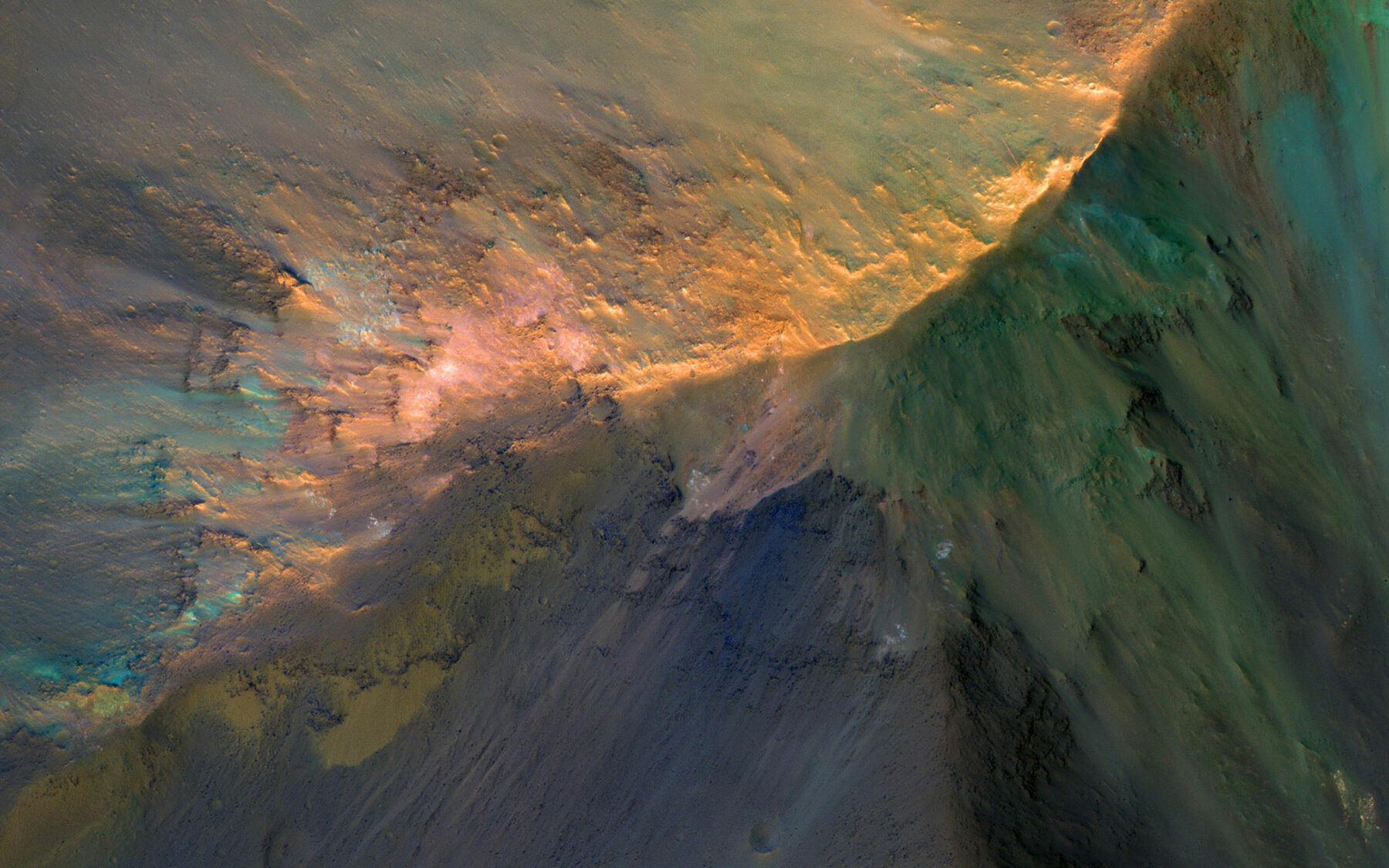Today’s technology allows us to look into deep space in a way that would have been unthinkable to previous generations.
At the click of a button, we can browse satellite images of the surface of faraway planets or look at distant nebulae in close up. Through infrared imaging, we can see black holes gobbling up stars, or detect ancient traces of water through robot proxies.
Our closest—albeit still distant—neighbor Mars is brought closer through thermal imaging technology, or THEMIS, a method that serves to make the planet seem both more and less real. These iridescent landscapes are unlike anything found on Earth. Perhaps more so than earthly cameras, these images are the product of the immense challenges of taking photographs millions of miles away. In capturing both the visible and infrared components of the Martian surface, the imaging system gives them a surreal uncanniness.
Take a look at some of the mission’s recent images below.
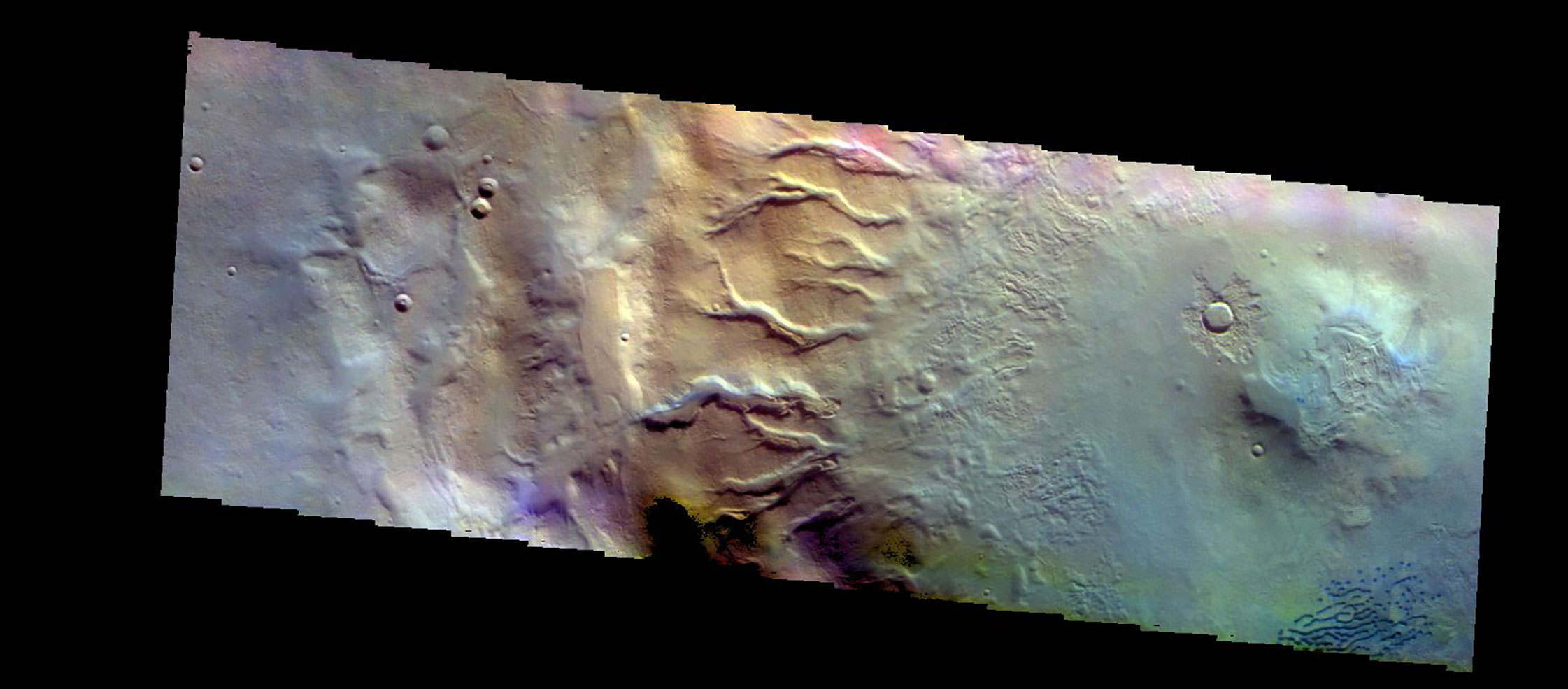
NASA’s 2001 Mars Odyssey, named in tribute to the Arthur C. Clarke novel, mission uses thermal imaging photography to get up-close-and-personal with the surface of the Red Planet.
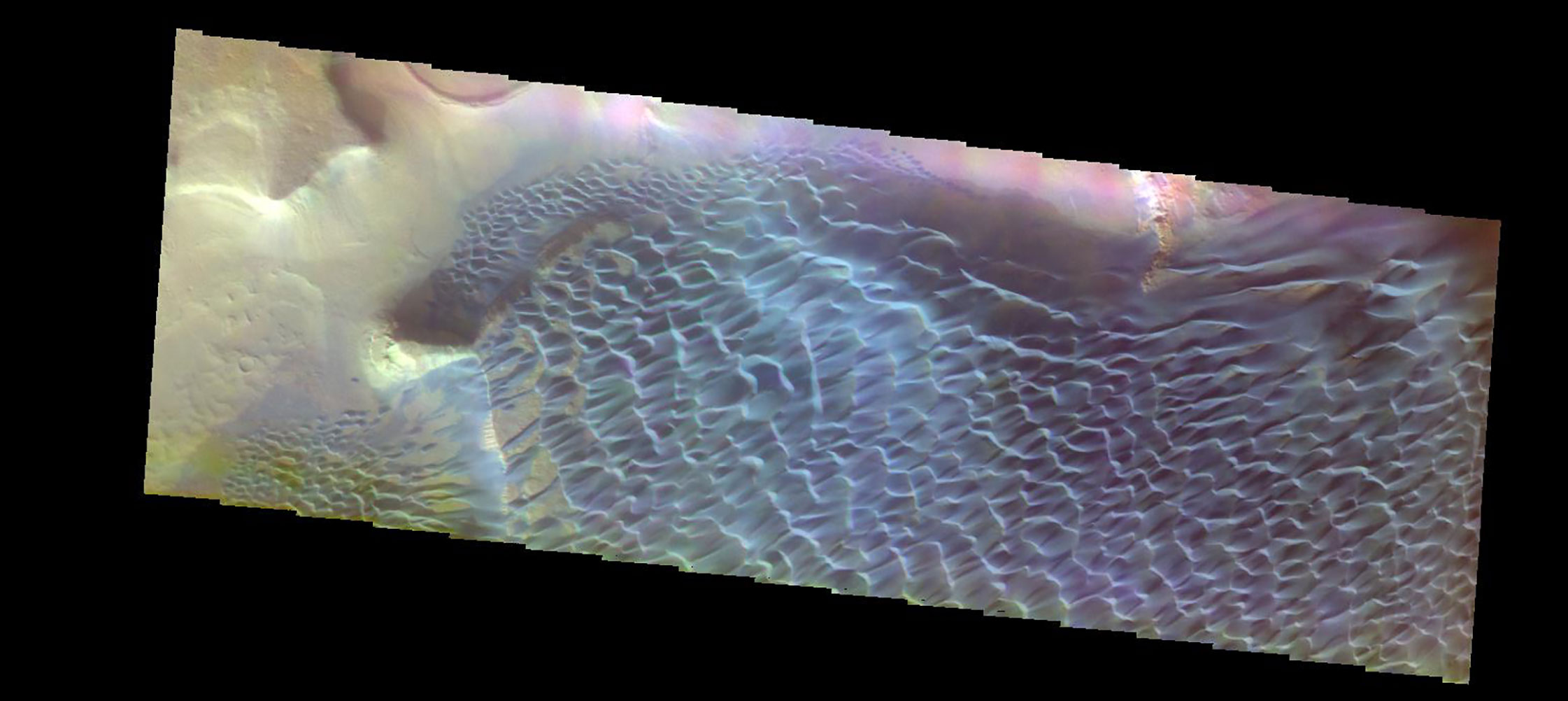
The THEMIS camera is affixed to an unmanned spacecraft that has been circling Mars for a decade and a half. Its objective is to look for evidence of water and ice in the planet’s past, adding to the bigger mission to discover whether life has ever existed there.
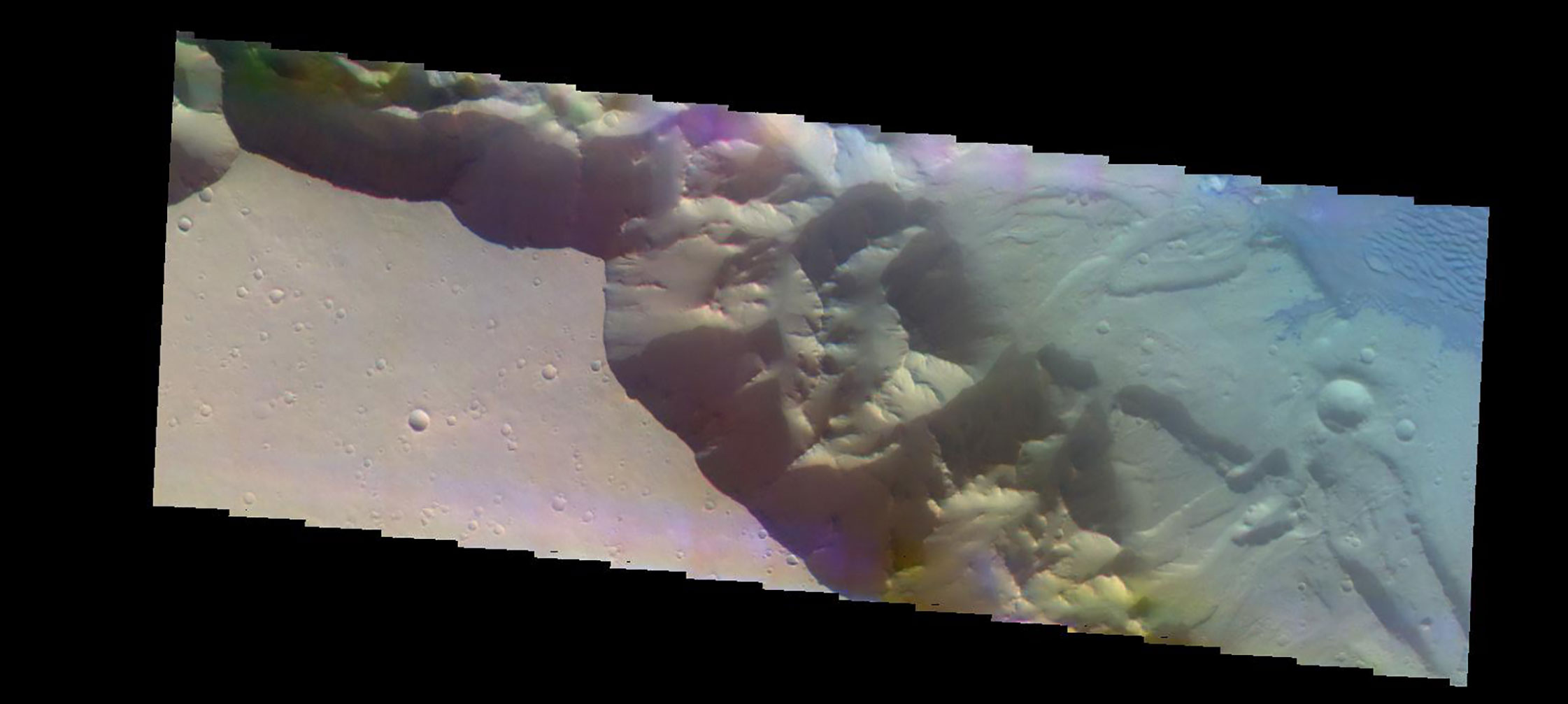
The Mars Odyssey is currently the longest-serving continually active spacecraft in orbit around a planet other than Earth.
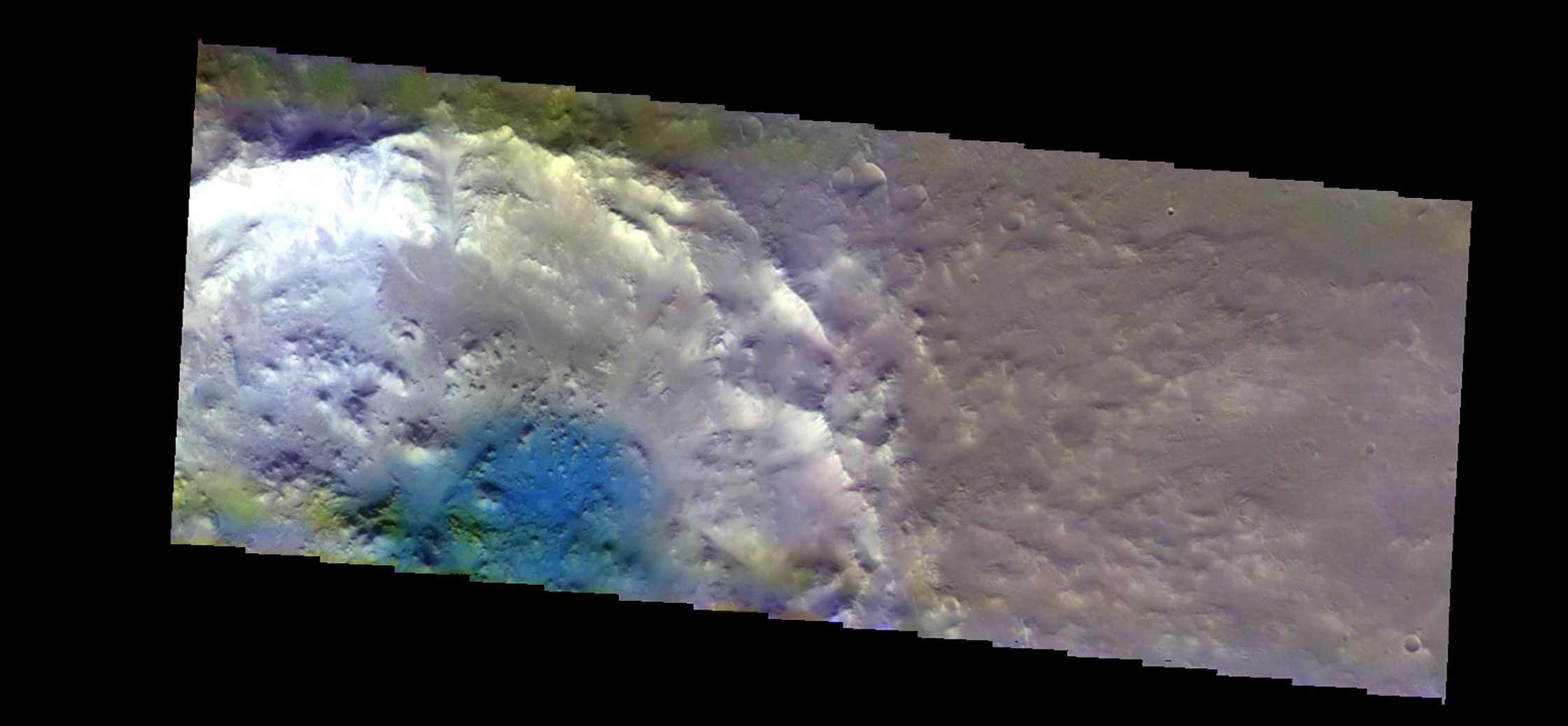
The THEMIS camera uses five different filters which are then combined to create what NASA call a ‘false color image’. The technique reveals the texture and variations of the planet’s surface.
If this has piqued your interest in celestial photography, you can take a look at NASA’s photo journal here.
Image credit: NASA/JPL-Caltech/ASU
Text: Siobhan Leddy
